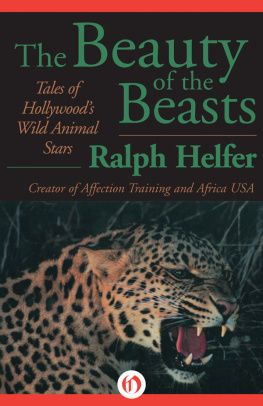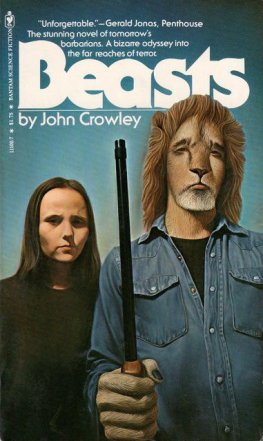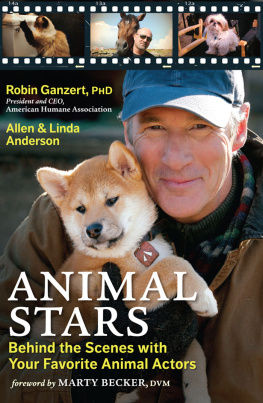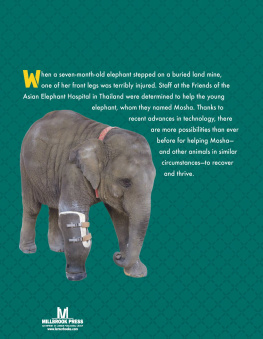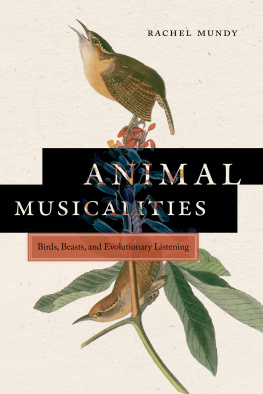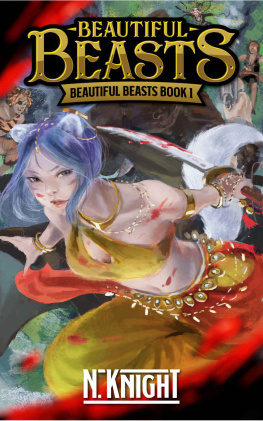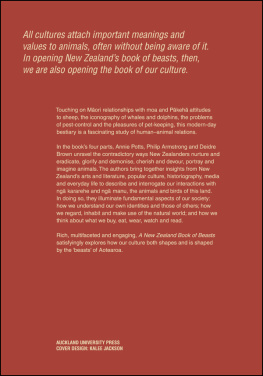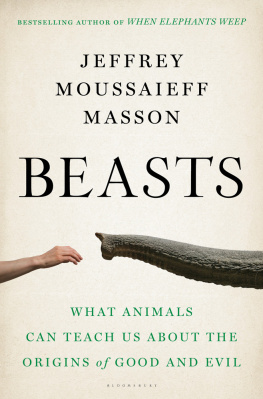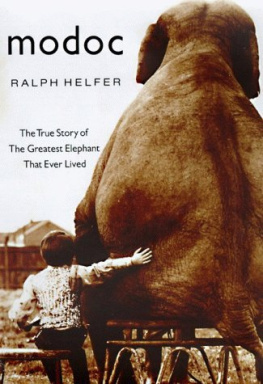The Beauty of the Beasts
Tales of Hollywoods Wild Animal Stars
Ralph Helfer

Contents
All rights reserved, including without limitation the right to reproduce this ebook or any portion thereof in any form or by any means, whether electronic or mechanical, now known or hereinafter invented, without the express written permission of the publisher.
Copyright 1990 by Ralph Helfer
ISBN: 978-1-4976-1240-2
This edition published in 2014 by Open Road Integrated Media, Inc.
345 Hudson Street
New York, NY 10014
www.openroadmedia.com

To Tana, my inspiration;
Toni, who shared Camelot;
Cathi, for believing in me;
and
Zamba, my mentor
ACKNOWLEDGMENTS
No one can do it alone. Throughout my life I have been indebted to various people along the way, people who were there for me at the right time and place. Such a person entered my life when this book was just a title. She has been there through the rough period when the words just didnt come out right. She has had the compassion, warmth, patience, and understanding to stick by my side until the very end. For this I will be eternally grateful. My love and thanks to Laurie Rose.
In addition, I would like to express my gratitude to the following individuals:
For his dedication and for creating the opportunity for me to share my stories, I would like to thank my publisher, Jeremy Tarcher.
For his help in the early stages of editing the book, my appreciation goes to Hank Stine.
For her affection training of me as a writer, my appreciation goes to Stephanie Eve Bernstein, my editor.
PROLOGUE
On one of my many visits to Africa, I spent an afternoon visiting with one of the world's foremost exporters of wild animals. With my lion Rafiki (which is Swahili for "friend") half asleep at my feet, we sat on a veranda sipping sundowners, watching a flock of marabou storks settling into the nearby yellow fever trees at the foot of Kilimanjaro.
But in spite of the peaceful vistas in front of us, the atmosphere on the porch was tense. I had just won a six-figure contract to supply a full-grown African lion for an upcoming film. At that time I had the only animals in the world who were qualified to perform the full range of actions required by this particular script.
My host had lost the contract due to his method of training a method that was widespread in the industry at the time. Like many other trainers, he firmly believed that lions had to be worked with a strong hand, which meant that the constant threat of physical abuse was used to dominate the animal. While this method was effective for many animal acts, it was not safe when physical contact between an animal and a performer was involved. Whenever a movie scene called for a hands-on approach with a mature lion, for example, directors were forced to use one of several options. For some scenes, a mechanical lion could be built, allowing the actors to work closely with the "animal" without danger. For attack scenes, a young animal sometimes wearing a fake mane could be substituted. Or, in moments of desperation, a taxidermied animal could be thrown or launched at the actor, who would fall to the ground, stabbing the dummy until the stuffing flew out and the director yelled, "Cut!" (In such scenes, the greatest danger was that of being knocked out by the hurtling stuffed animal!)
Before the studio located my lion, in fact, they had been having a replica of a lion built in Germany for the scenes in which the use of a live animal would endanger the actor. Once they found my uniquely trained lion, they stopped building the replica, since everything could now be filmed using a live, mature lion.
My host was eager to know what techniques I was using to control my animal. He assumed that I was using some type of drug that made the animal tractable. He was suspicious of my animals, and he was equally suspicious of me. Being of the old school, he believed that the more scars one had, the more marks of distinction one had earned as a trainer.
Look at Joe, he said, beckoning his chief trainer to come over to where we were sitting. He grabbed Joe's right arm. Two fingers missing to a tough old leopard. And how about this one? he continued, rolling up his own pant leg. A deep scar ran from his knee back to the middle of his calf. This lion damn near killed me! he bragged. What about you, Ralph? What do you have to show for it?
I shrugged, unwilling to enter that competition. It was true that in the beginning of my career as a stuntman and wild-animal trainer, I had been clawed by lions, attacked by bears, bitten by poisonous snakes, and nearly suffocated by pythons. But that had been when I was handling animals the same way that he did.
Since I discovered affection training, I have nothing to show, I said. Not a scratch.
My host snorted in disbelief. Affection what?
I wasnt exactly surprised by his reaction; my peers in the States had been equally hostile.
Affection training. Instead of dealing with my animals physically, I deal with them emotionally. I know this is going to sound crazy to you, but I use love, patience, understanding, and respect to get my animals to perform.
My host and his trainer exchanged smug looks. Just then, the maid brought us out a dinner tray of steak sandwiches and drinks. At the smell of food, Rafiki stretched, yawned, and rose to his feet. Without being conscious of it, my host drew his injured leg in closer to him, away from the lion. The topic shifted to the poaching problems plaguing Africa.
Midway through the meal I casually slipped a thick piece of rare steak to Rafiki, who carefully took it from my hand and then lay down to savor it.
The entire scene was not lost on my host, who was amazed by Rafikis eating cooked meat, as well as by his gentleness. He knew that he could never do that with any of his own lions.
At sunset I loaded Rafiki into the backseat of the Land Rover and we took off, with the lions majestic head sticking up through the open sunroof.
On the ride back to our location site I reflected on the meeting. I knew my host had been impressed, not with what I had said, but with what he had seen. Perhaps he wouldnt change his way of training animals, but others surely would.
In the years to follow, my affection-training approach to working with animals revolutionized the way in which wild animals could be handled. The old method of fear training was not humane, and animals trained this way were dangerous to work with. In contrast, affection training is highly humane and extremely safe. Performances that would previously have been impossible were now regular occurrences, and the possibilities were limited only by the imagination.
For the first time, a person could handle full-grown bears and leopards safely, a child could ride on a tigers back, and a lion could really lie down with a lamb! In many ways, the peaceable kingdom had become a reality.
PART I
THE TURNING POINT
Inever envisioned myself as a pioneer.
Ever since I was a boy, Id known that I would spend my life immersed in the world of animals. To me, the animal kingdom was more perfect than the human one.
I became a professional stuntman and wild-animal trainer so that I could combine my passion for animals with my love of the silver screen. I was quickly disillusioned. The approach used to train animals for films went against my belief that fear should

